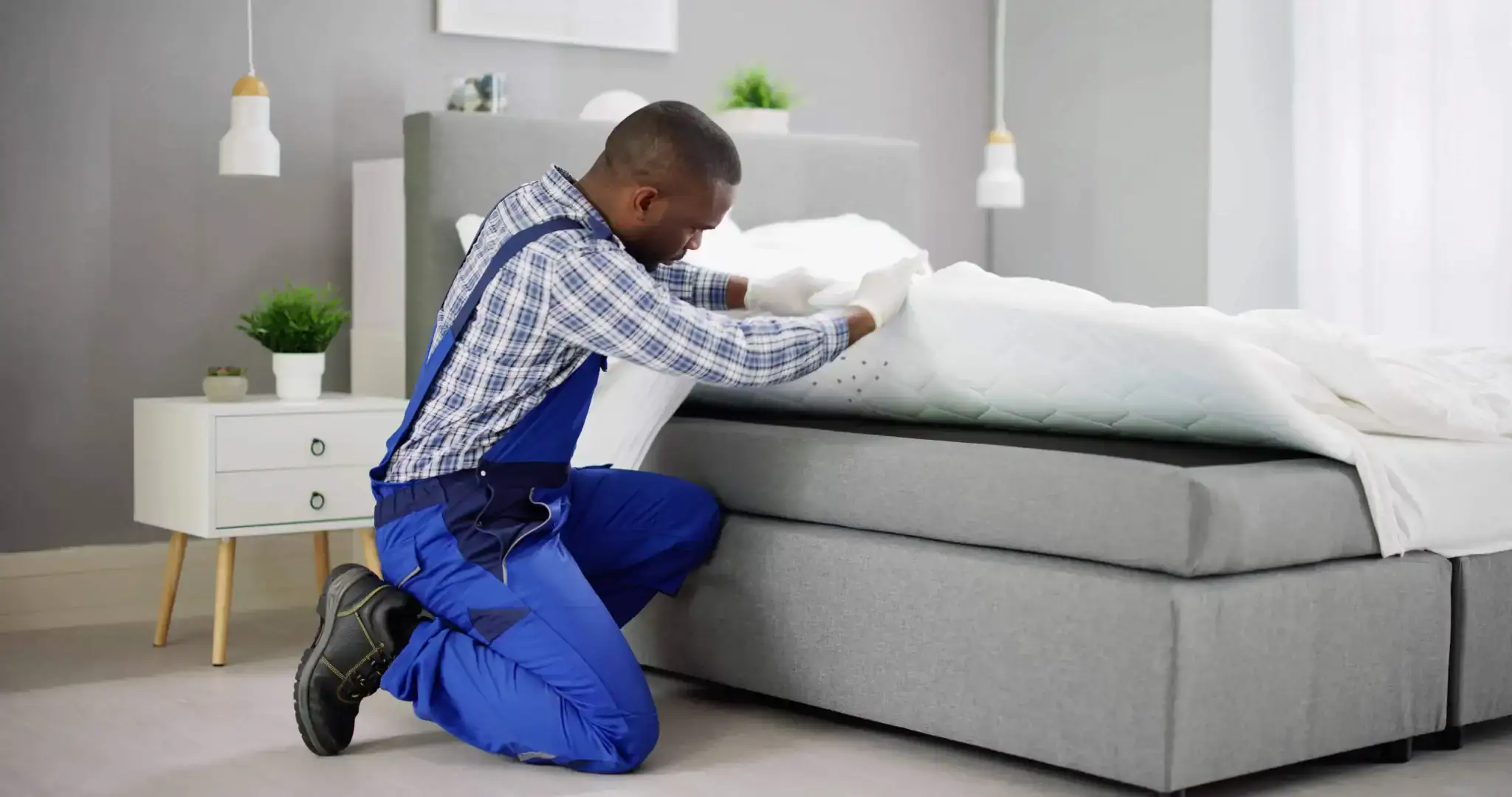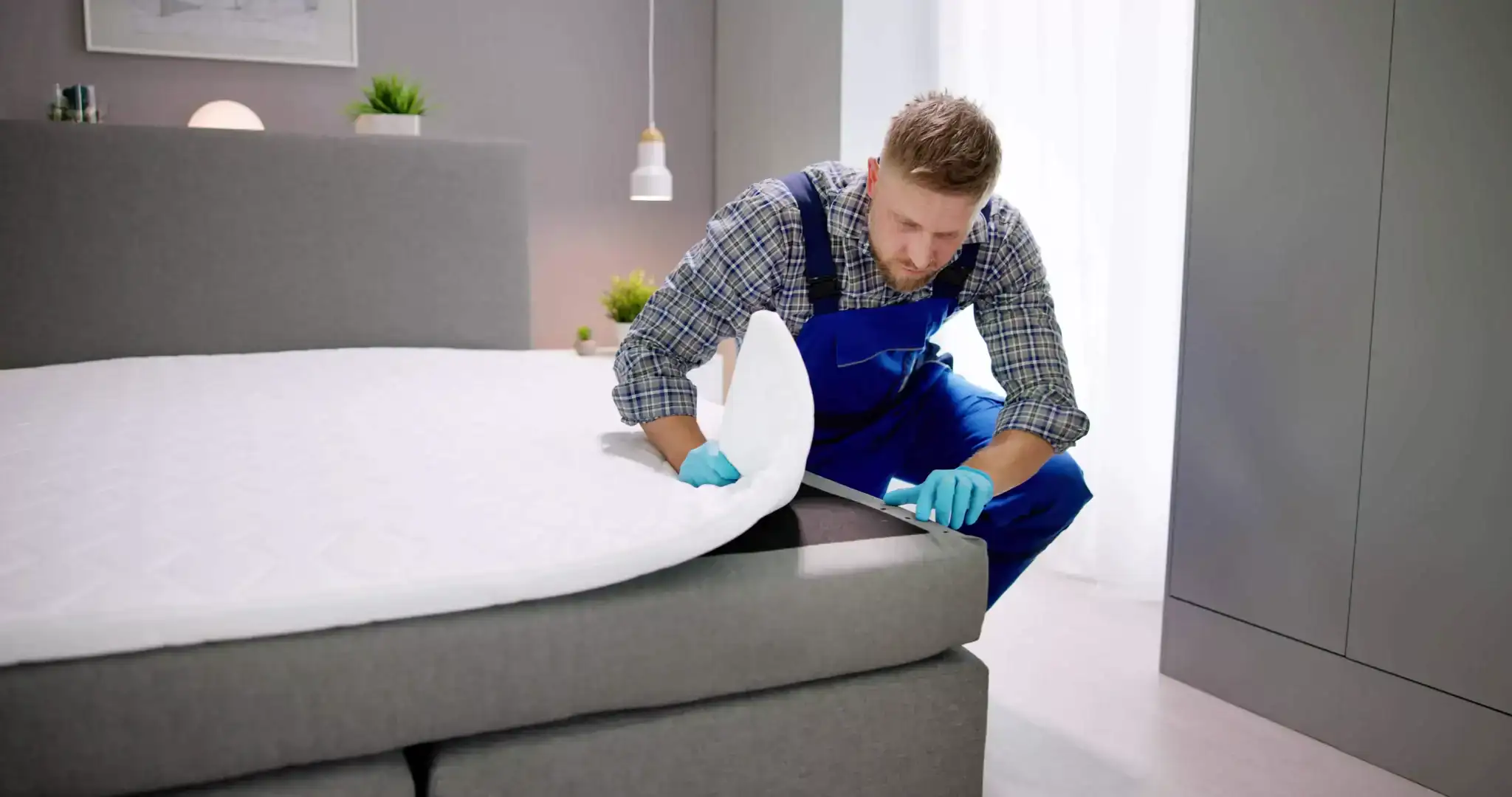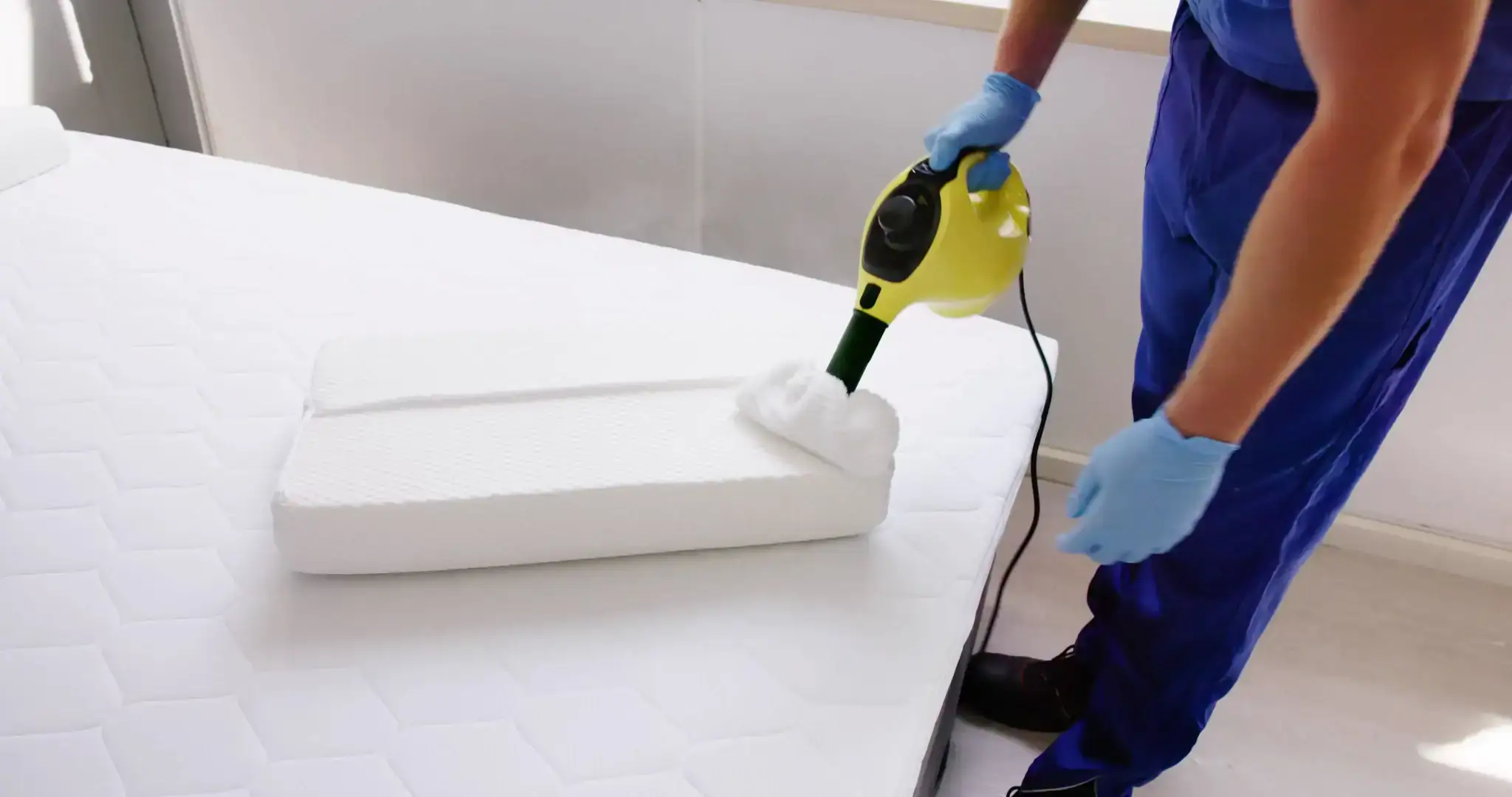
Hear from Our Customers

You’ll stop waking up with new bites scattered across your arms and legs. No more anxious nights wondering if those red welts are from bed bugs hiding in your mattress seams.
Your furniture stays put. We eliminate bed bugs without forcing you to throw away beds, couches, or other belongings that would cost thousands to replace.
The constant worry ends. Once we’ve completed treatment, you can invite guests over without embarrassment or fear that they’ll go home with unwanted hitchhikers.
We’ve served Flint families and businesses since 2005. Roger brings 26 years of hands-on experience to every bed bug problem we solve.
We’re one of fewer than 100 companies nationwide offering canine bed bug detection. While most exterminators rely on visual inspections that miss 67% of infestations, our trained dogs detect live bed bugs with over 90% accuracy.
Flint residents know they can count on the same certified technician visit after visit. No strangers showing up who don’t understand your property’s unique challenges or treatment history.

We start with a thorough canine inspection. Our trained detection dog pinpoints exactly where live bed bugs are hiding – even single eggs the size of a grain of salt that human eyes would miss.
Your technician develops a customized treatment plan based on the infestation’s severity and location. This typically involves a combination of targeted insecticides, heat treatment for heavily infested items, and residual products that prevent re-infestation.
Follow-up visits happen every 2-3 weeks to monitor progress and address any remaining activity. Most bed bug eliminations require 3-4 treatment rounds to completely break the reproduction cycle and ensure every last bug is gone.

Ready to get started?
Every bed bug service includes canine detection, customized treatment planning, and ongoing monitoring until elimination is complete. We use integrated pest management techniques that are safe for your family and pets.
Flint’s ranking at #16 on the national bed bug list means local infestations are becoming more common and more aggressive. Properties near downtown, apartment complexes, and areas with high tenant turnover face the highest risk.
Our treatments target all life stages – from eggs to adults – using methods proven effective against the specific bed bug populations we encounter in Genesee County. Heat treatments reach the lethal temperature of 118°F that kills even the most resistant strains.

Most bed bug eliminations require 3-4 treatment visits spaced 2-3 weeks apart to completely break the reproduction cycle. You’ll typically see a significant reduction in activity after the first treatment, but eggs can continue hatching for several weeks.
The timeline depends on infestation severity and how long bed bugs have been established. Early-stage infestations caught within the first few weeks respond faster than mature colonies that have spread throughout multiple rooms.
Heat treatments can eliminate bed bugs in a single day, but follow-up monitoring is still essential to ensure no survivors remain in areas that didn’t reach lethal temperatures.
No, professional treatment eliminates bed bugs from your existing furniture without requiring you to discard anything. Throwing away infested items often spreads bed bugs to other areas during removal and doesn’t solve the underlying problem.
We treat mattresses, box springs, bed frames, and upholstered furniture in place using targeted applications that penetrate deep into seams and crevices where bed bugs hide. Heat treatments can sanitize heavily infested items without damage.
Mattress encasements applied after treatment provide long-term protection and make future inspections easier. Any bed bugs trapped inside eventually starve, while new ones can’t establish colonies in the sealed environment.
Trained bed bug detection dogs achieve 90-98% accuracy rates, while human visual inspections typically catch only 33% of actual infestations. Dogs can detect single bed bugs and eggs in areas humans would never think to check.
Our canines are certified through the National Entomology Scent Detection Canine Association and trained specifically for live bed bug detection. They can smell bed bug pheromones even when insects are hiding inside walls, electrical outlets, or furniture joints.
The inspection process takes minutes instead of hours, and dogs can differentiate between live infestations requiring treatment and old evidence from previous problems that have already been resolved.
Remove clutter from floors and surfaces so we can access all potential hiding spots. Wash all bedding, curtains, and clothing in hot water (120°F minimum) and dry on high heat for at least 30 minutes.
Vacuum thoroughly around beds, furniture, and baseboards, then immediately dispose of the vacuum bag in a sealed plastic bag. Move beds at least 6 inches from walls and remove everything stored underneath.
Don’t move items from infested rooms to clean areas, as this spreads bed bugs. Leave furniture and belongings in place – we’ll treat everything during the service visit without requiring you to relocate items.
Treatment costs vary based on infestation severity, property size, and chosen methods. Most residential treatments range from $500-$2,000 for complete elimination, while canine inspections typically cost around $350.
Heat treatments cost more upfront ($2,000-$4,000) but often require fewer follow-up visits than conventional chemical treatments. We offer price matching against reasonable competitor rates to ensure fair pricing.
Early detection through canine inspection actually saves money by catching infestations before they spread throughout the entire property. Small, localized problems cost significantly less to treat than whole-house infestations.
Flint moved up 7 spots to #16 on the national bed bug ranking, reflecting increased travel, apartment living, and second-hand furniture purchases that facilitate bed bug spread. These resilient pests have developed resistance to many over-the-counter treatments.
Urban areas like Flint face higher risks due to apartment buildings where bed bugs easily travel between units, hotels that serve as introduction points, and economic factors that increase furniture turnover and shared living situations.
Modern bed bugs are more aggressive than previous generations and reproduce faster in heated indoor environments. Without professional intervention, a few bed bugs can become thousands within months.